To install a fireplace blower, disconnect the power supply, remove the fireplace grate, place the blower in the designated area, and connect the wiring to the blower and power source. Installing a fireplace blower requires a few simple steps to enhance the efficiency and heat distribution of your fireplace.
By following the proper installation process, you can easily add a blower to your fireplace and enjoy a more comfortable and warm living space. We will guide you through the steps to install a fireplace blower, ensuring that you can complete the task successfully.
So, let’s get started!
Benefits Of Installing A Fireplace Blower
When it comes to heating your home effectively and efficiently, installing a fireplace blower can make a significant difference. A fireplace blower is an electronic device that helps improve the heating efficiency of your fireplace by enhancing heat distribution throughout the room. In addition to providing enhanced heating efficiency, a fireplace blower offers several other benefits that can greatly enhance your overall fireplace experience.
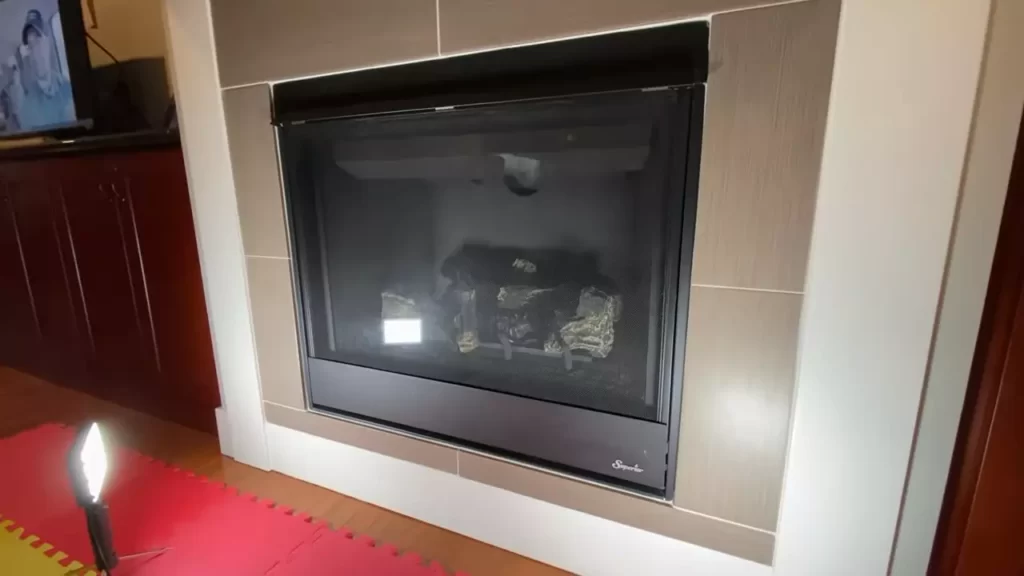
Enhanced Heating Efficiency
One of the primary benefits of installing a fireplace blower is the enhanced heating efficiency it provides. Without a blower, the heat generated by your fireplace tends to stay near the hearth, making it difficult for the warmth to reach the furthest corners of the room. However, by installing a fireplace blower, the heat produced by the flames is forced out into the room, ensuring an even distribution of warmth. The blower blows the warm air from the fireplace into the surrounding space, allowing you to enjoy a cozy and comfortable environment no matter where you are in the room.
Improved Air Circulation
Installing a fireplace blower also improves air circulation within the room. When the blower forces warm air into the space, it helps to circulate the air, preventing it from becoming stagnant and keeping it fresh and breathable. This improved air circulation not only enhances the comfort levels in the room but also helps maintain a healthier indoor environment by reducing the buildup of dust, allergens, and humidity.
Cost Savings
In addition to enhanced heating efficiency and improved air circulation, installing a fireplace blower can also result in cost savings. By distributing heat more effectively throughout the room, a fireplace blower allows you to reduce reliance on other heating sources such as electric heaters or central heating systems. This can potentially lead to significant energy savings, lowering your heating costs and contributing to a more environmentally-friendly home.
Moreover, by optimizing the heating efficiency of your fireplace with a blower, you can potentially increase the lifespan of your fireplace as well. By preventing the buildup of excess heat near the hearth, a blower helps to regulate and distribute the heat evenly, reducing the risk of damage to the fireplace structure and components.
In conclusion, with its ability to enhance heating efficiency, improve air circulation, and provide cost savings, installing a fireplace blower is undoubtedly a wise investment. Not only does it transform the way you experience warmth and comfort in your home, but it also offers long-term benefits that can positively impact your energy consumption and indoor air quality.
Tools And Materials Needed For The Installation
Before you begin installing a fireplace blower, you’ll need a few essential tools and materials to ensure a smooth and successful installation process. By having these items ready, you can save time and avoid unnecessary trips to the hardware store.
Fireplace Blower Kit
The most important component for installing a fireplace blower is, of course, the blower kit itself. Make sure you have the right size and type of blower that fits your fireplace model. Blower kits typically consist of a blower unit, power cord, and variable speed control switch.
Screwdriver
A screwdriver is an essential tool that you’ll need for attaching various components during the installation process. Opt for a screwdriver with different interchangeable heads to accommodate the different types and sizes of screws you may encounter.
Drill
Depending on your fireplace model, you may need to drill holes for mounting brackets. A drill with the appropriate drill bits will allow you to easily create the necessary holes and ensure a secure and stable installation.
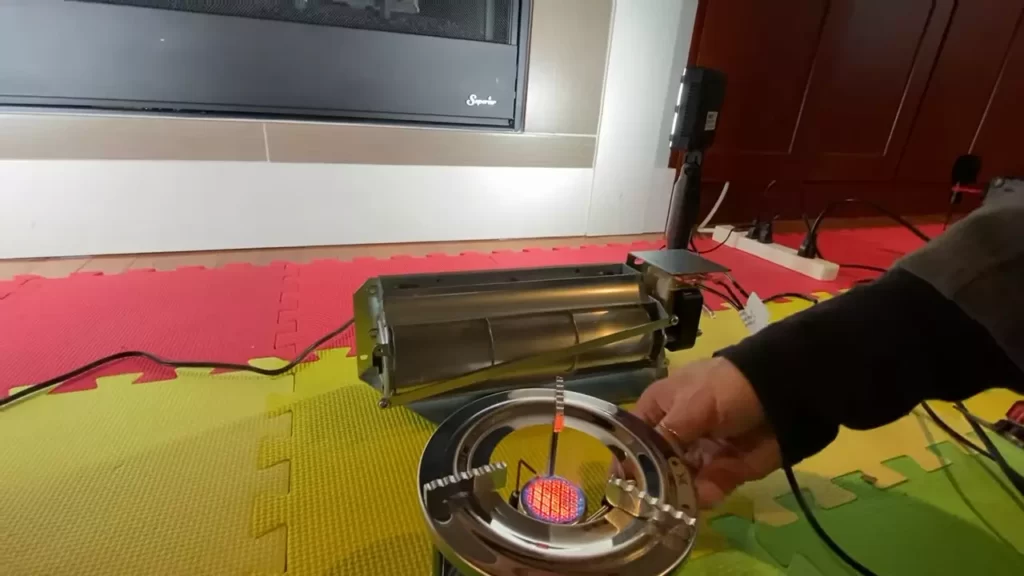
Measuring Tape
To ensure a precise and accurate installation, a measuring tape is indispensable. Use it to measure the various components, such as the size of the fireplace opening and the distance between mounting brackets.
Wire Strippers
Wire strippers are necessary for removing the insulation from the power cord and other wires, allowing you to properly connect them to the blower and any necessary electrical outlets.
Electrical Tape
Electrical tape is essential for insulating and securing any electrical connections you make during the installation process. It provides a protective layer and helps prevent any potential electrical hazards.
Mounting Brackets
Mounting brackets are used to secure the blower unit to the inside of the fireplace. Ensure that the brackets are compatible with your fireplace model and that they provide the necessary stability and support.
Screws
Be sure to have an assortment of screws on hand. Different components may require different types and sizes of screws, so having a variety of options available will help you find the right fit for each step of the installation process.
By having these tools and materials ready, you can confidently proceed with the installation of your fireplace blower. Remember to follow the manufacturer’s instructions and safety guidelines to ensure the best results and enjoyment of a warm and cozy home.
Preparing For The Installation
Before installing a fireplace blower, it is important to properly prepare the area and ensure the necessary safety precautions are taken. This section will guide you through the steps of turning off the fireplace, disconnecting power, cleaning the fireplace, removing debris, and measuring the available space for the blower.
Turn off the Fireplace and Disconnect Power
The first step in preparing for the installation of a fireplace blower is to turn off the fireplace and disconnect the power. This is crucial to ensure your safety and prevent any accidents during the installation process.
To turn off the fireplace, locate the power switch or control panel. Depending on the model, the switch may be located on the wall, the fireplace unit itself, or a remote control. Make sure the fireplace is completely powered off before proceeding.
Next, it is important to disconnect the power supply to the fireplace. This can usually be done by unplugging the power cord from the electrical outlet. If the fireplace is hardwired, locate the circuit breaker or fuse box and turn off the power supply to the fireplace.
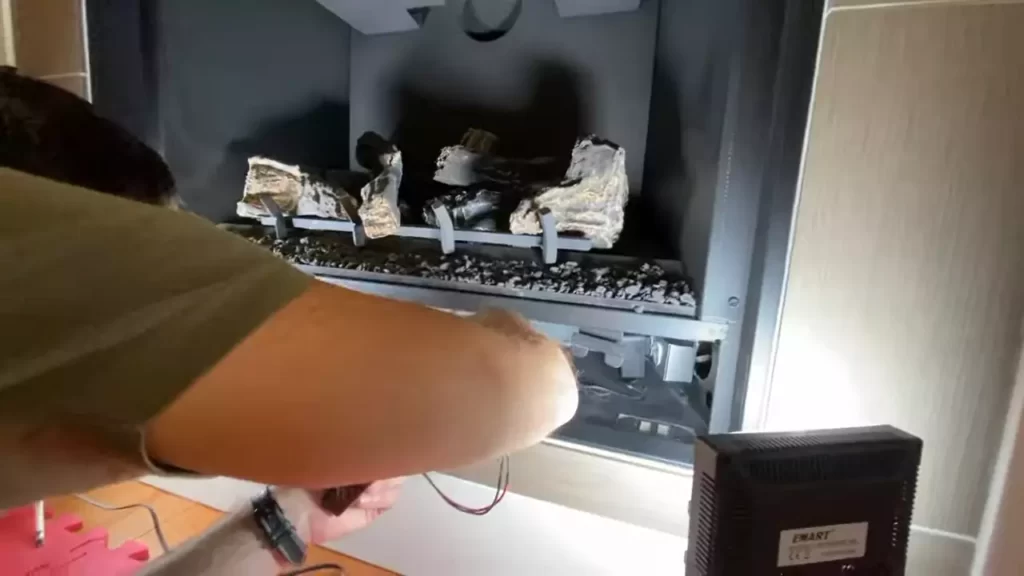
Clean the Fireplace and Remove Debris
Once the fireplace is safely turned off and the power is disconnected, it is time to clean the fireplace and remove any debris. This will ensure proper airflow and prevent any blockages that could affect the performance of the fireplace blower.
Start by removing any loose ash or debris from the firebox using a shovel or vacuum cleaner. Be careful not to damage the interior of the fireplace while doing so.
Next, clean the glass doors or screens using a fireplace glass cleaner and a soft cloth. This will remove any soot or residue, allowing for a clear view of the fire.
In addition, it is recommended to clean the chimney to remove any built-up creosote or other flammable substances. This can be done by hiring a professional chimney sweep or using a chimney cleaning kit, following the instructions provided.
Measure the Available Space for the Blower
Before installing a fireplace blower, it is essential to measure the available space to ensure a proper fit. To do this, you will need a tape measure or ruler.
- Start by measuring the width and height of the opening of the fireplace.
- Then, measure the depth of the opening, from the front to the back of the fireplace.
- Finally, measure the width and height of the area where the blower will be installed. This may vary depending on the specific model of the blower.
These measurements will help you choose a blower that fits perfectly in your fireplace, ensuring efficient heating and optimal performance.
By following these steps and properly preparing for the installation of a fireplace blower, you will be one step closer to enjoying enhanced heat distribution and improved energy efficiency in your home.
Choosing The Right Fireplace Blower Kit
Installing a fireplace blower kit is an excellent way to enhance the heat distribution in your home and make your fireplace more efficient. However, it’s essential to choose the right fireplace blower kit to ensure optimal performance. In this section, we will discuss the key factors to consider when selecting a fireplace blower kit.
Consider the Type of Fireplace
Before purchasing a fireplace blower kit, it’s important to consider the type of fireplace you have. There are three main types: wood-burning, gas, and electric fireplaces. Each type has its own requirements and limitations when it comes to installing a blower kit.
If you have a wood-burning fireplace, you can choose from a variety of blower kits that are specifically designed for this type of fireplace. These kits typically include a blower, a fan speed control, and all the necessary mounting hardware. On the other hand, if you have a gas or electric fireplace, you might need to look for a blower kit that is compatible with your specific model.
Determine the Heat Output of the Fireplace
The heat output of your fireplace is another important factor to consider when choosing a blower kit. The heat output is usually measured in British Thermal Units (BTUs) and indicates how much heat the fireplace produces. It’s crucial to select a blower kit that can handle the heat output of your fireplace to ensure efficient operation.
Installing a blower kit that is not powerful enough for your fireplace can result in poor heat distribution and reduced energy efficiency. On the other hand, selecting a blower kit that is too powerful for your fireplace may cause excessive heat output, leading to potential damage or safety hazards.
Check Compatibility with the Fireplace Model
Compatibility is another essential consideration when choosing a fireplace blower kit. Not all blower kits are compatible with every fireplace model, so it’s crucial to check the compatibility before making a purchase. This information can usually be found in the product description or specifications.
In addition to the overall compatibility, you should also consider the physical dimensions of the blower kit and whether it will fit properly inside your fireplace. Pay attention to the measurements of the blower and ensure that there is sufficient space for installation without impeding the functionality of the fireplace.
By considering the type of fireplace, determining the heat output, and checking compatibility with the fireplace model, you can make an informed decision when choosing a fireplace blower kit. These factors ensure that the blower kit is not only suitable for your fireplace but also enhances its efficiency and heat distribution, providing you with a more comfortable and cozy living space.
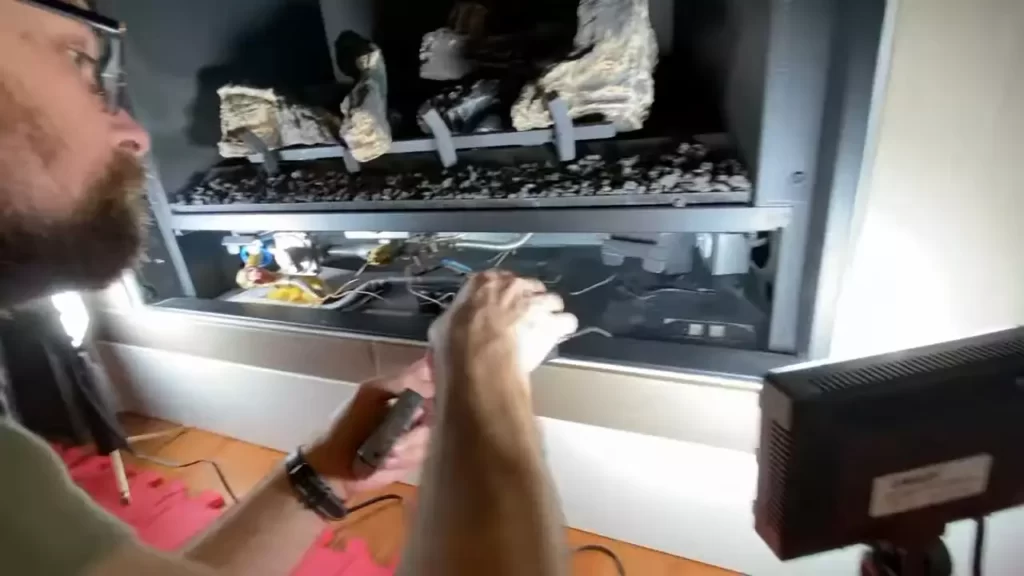
Installing The Fireplace Blower
Installing a fireplace blower can greatly enhance the efficiency and heat output of your fireplace. Not only does it help distribute warm air throughout the room, but it also increases the overall heating efficiency of your fireplace. In this section, we will walk you through the step-by-step process of installing a fireplace blower, from determining the ideal location for the blower to testing it for proper functioning.
Determine the Ideal Location for the Blower
The first step in installing a fireplace blower is to determine the ideal location for it. You want to place the blower in a spot that allows it to effectively distribute warm air throughout the room. Ideally, it should be positioned at the back of the fireplace, near the heat source. This will ensure that the blower can draw in the hot air and distribute it evenly.
Attach Mounting Brackets to the Fireplace
Once you have determined the ideal location for the blower, it’s time to attach the mounting brackets. These brackets will serve as the support for the blower. Begin by marking the spots where the brackets should be attached. Make sure to use a level to ensure that they are straight.
Next, drill pilot holes into the marked spots and insert the provided screws to secure the brackets in place. Ensure that the brackets are firmly attached to the fireplace, as they will be holding the weight of the blower.
Connect Wiring to the Blower
With the mounting brackets in place, it’s time to connect the wiring to the blower. Start by locating the wiring terminals on the blower. They are usually labeled as “AC input” or something similar.
Next, strip the insulation off the wires coming from your power source. Once the wires are exposed, connect the black wire to the black terminal and the white wire to the white terminal. Use wire connectors to secure the connections, ensuring a tight and stable connection.
Secure the Blower onto the Mounting Brackets
Now that the wiring is complete, it’s time to secure the blower onto the mounting brackets. Align the blower with the brackets and carefully slide it onto them. Ensure that the blower is level and centered on the brackets.
Once in position, use the provided screws to secure the blower to the brackets. Double-check that the blower is tightly secured before moving on to the next step.
Test the Blower for Proper Functioning
Finally, it’s time to test the blower for proper functioning. Turn on the fireplace and check if the blower is blowing warm air. Make sure that the blower is running smoothly and quietly.
If everything looks and sounds good, congratulations! You have successfully installed a fireplace blower. Enjoy the increased heat output and efficiency that it brings to your fireplace.
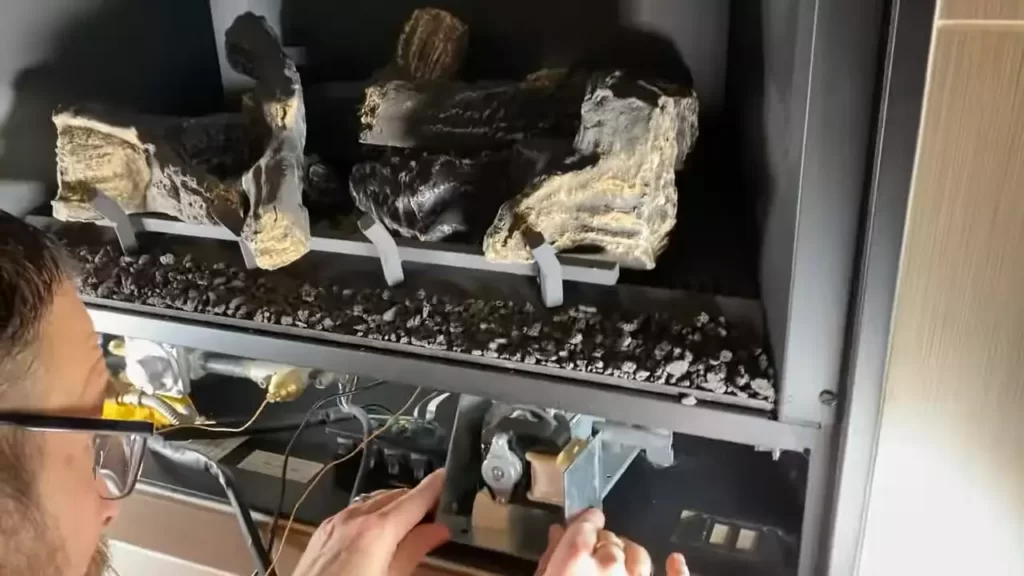
Troubleshooting Common Installation Issues
Installing a fireplace blower can greatly enhance the efficiency and heat output of your fireplace. However, like any installation, issues can arise that may prevent the blower from working properly. In this section, we will discuss some common installation issues and provide troubleshooting tips to help you get your fireplace blower up and running smoothly.
Blower Not Working
If you find that your fireplace blower is not working, don’t fret. There are a few steps you can take to troubleshoot and resolve this issue:
- Check the power supply: Ensure that the blower is securely plugged into a power outlet. Also, check if the power outlet is functioning properly by plugging in another device. If the outlet is not supplying power, try plugging the blower into a different outlet.
- Inspect the blower motor: Carefully examine the blower motor for any signs of damage or wear. If you notice any issues, such as frayed wires or a burnt smell, you may need to replace the motor.
- Test the blower switch: Use a multimeter to test the blower switch for continuity. If the switch is faulty, it will need to be replaced to restore the blower’s functionality.
Inadequate Airflow
If you are experiencing inadequate airflow from your fireplace blower, here are a few troubleshooting steps to consider:
- Check for obstructions: Inspect the blower and the surrounding area for any debris, dirt, or other obstructions that may be blocking the airflow. Clearing these obstructions should help improve the airflow.
- Adjust the fan speed: Some fireplace blowers have adjustable fan speeds. If you’re not getting enough airflow, try increasing the fan speed to see if that resolves the issue.
- Clean or replace the air filter: Over time, the air filter can become clogged with dust and debris, restricting the airflow. Clean or replace the air filter as recommended by the manufacturer.
Incorrect Wiring
Incorrect wiring can lead to various problems with your fireplace blower. To troubleshoot incorrect wiring, follow these steps:
- Check the wiring connections: Inspect all the wiring connections to ensure they are properly secured. Loose or disconnected wires can disrupt the power supply to the blower, resulting in malfunctions.
- Use a wiring diagram: If you are unsure about the correct wiring connections, refer to the manufacturer’s wiring diagram for your specific fireplace blower model. This diagram will guide you on how to properly wire the blower for optimal performance.
By following these troubleshooting tips for common installation issues, you should be able to resolve any problems you encounter with your fireplace blower. Remember, if you’re unsure about any aspect of the installation or troubleshooting process, it’s always best to consult a professional for assistance.
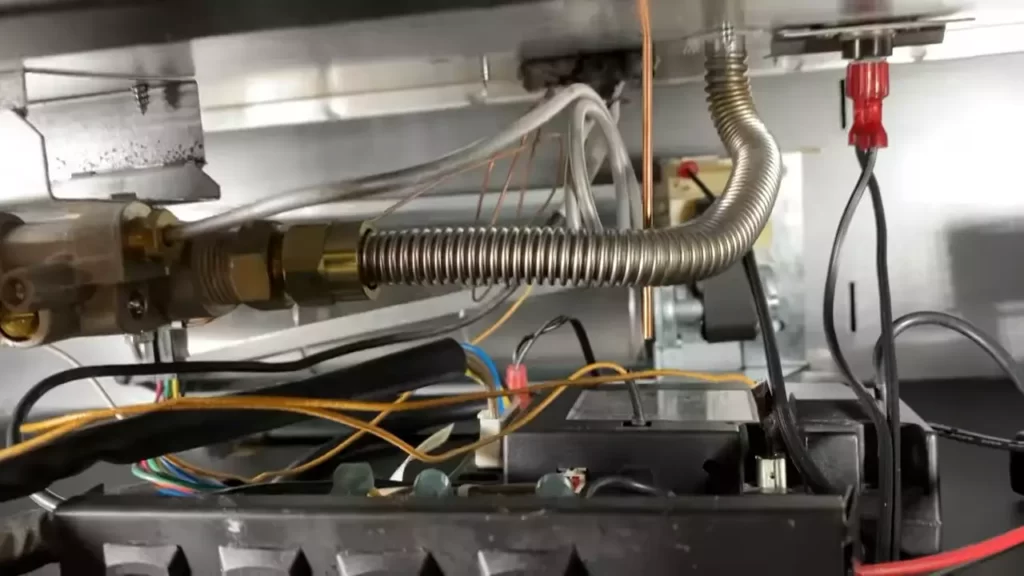
Maintenance And Care For Fireplace Blower
Proper maintenance and care can greatly extend the lifespan and efficiency of your fireplace blower. By following a few simple steps, you can ensure that your blower operates smoothly and effectively throughout the year. In this section, we will discuss the important maintenance tasks that should be performed regularly. Remember, a well-maintained blower not only enhances the warmth and comfort of your home, but also contributes to a safe and efficient fireplace system.
Clean the Blower Regularly
Cleaning the blower on a regular basis is crucial to remove any accumulated dirt, dust, or debris. Over time, these particles can hinder the blower’s performance and efficiency. To clean the blower:
- Turn off the fireplace and unplug the blower from the power source.
- Remove the blower assembly, following the manufacturer’s instructions.
- Use a soft brush or cloth to gently remove any dust or debris from the blower blades, motor, and housing.
- If necessary, use a vacuum cleaner with a brush attachment to further clean hard-to-reach areas.
- Inspect the blower for any signs of damage or wear. Replace any faulty or worn-out components.
- Reassemble the blower and plug it back into the power source.
By regularly cleaning your fireplace blower, you can ensure optimal performance and prevent any potential issues that may arise from dirt or debris buildup.
Check for Loose Wiring Connections
A fireplace blower relies on a system of wiring to function properly. Over time, these connections may become loose or damaged due to vibrations or temperature changes. To check for loose wiring connections:
- Turn off the fireplace and unplug the blower from the power source.
- Inspect the wiring connections, ensuring that they are tight and secure.
- If you notice any loose connections, carefully tighten them using a screwdriver or appropriate tool.
- Check the wiring for any signs of damage or fraying. If necessary, replace the damaged wiring.
- Plug the blower back into the power source and turn on the fireplace to ensure proper operation.
Regularly checking and tightening the wiring connections will prevent any electrical issues and ensure that the blower continues to function safely and efficiently.
Lubricate Moving Parts Annually
Proper lubrication is essential for the smooth operation of the blower’s moving parts, such as the motor and bearings. Applying lubricant annually will help reduce friction and wear. To lubricate the moving parts:
- Turn off the fireplace and unplug the blower from the power source.
- Remove the blower assembly, following the manufacturer’s instructions.
- Apply a small amount of lubricant (recommended by the manufacturer) to the motor and other moving parts.
- Ensure that the lubricant is evenly distributed and not excessive.
- Reassemble the blower and plug it back into the power source.
- Turn on the fireplace to allow the blower to run for a few minutes, ensuring that the lubricant is properly distributed.
Lubricating the moving parts annually will help maintain their efficiency and prolong their lifespan, ensuring that your fireplace blower operates smoothly for years to come.
Frequently Asked Questions On How To Install Fireplace Blower
Can You Add A Blower To An Existing Fireplace?
Yes, it is possible to add a blower to an existing fireplace. A blower helps to circulate the warm air throughout the room more efficiently.
How Much Does It Cost To Install A Fireplace Blower?
The cost of installing a fireplace blower varies depending on factors like the type of blower and the complexity of the installation. Generally, homeowners can expect to pay between $200 to $1,000, including both the blower and installation fees. Contact a professional for accurate pricing based on your specific needs.
How Do You Install A Wooden Fireplace Blower?
To install a wooden fireplace blower, follow these steps:
- Position the blower in the desired location within the fireplace.
- Connect the blower to the electrical supply.
- Attach the blower to the fireplace using screws or brackets.
- Test the blower to ensure proper functioning.
- Enjoy the enhanced heat distribution provided by the wooden fireplace blower.
Does The Blower Need To Be On With Fireplace?
The blower does not need to be on with the fireplace, but it can help distribute warmth more efficiently.
Conclusion
Installing a fireplace blower can greatly enhance the efficiency and warmth of your fireplace. By following the simple steps outlined in this guide, you can easily complete the installation process yourself. Remember to take safety precautions and consult the manufacturer’s instructions for specific details.
With a fireplace blower in place, you’ll enjoy a cozier and more energy-efficient home during the colder months. Upgrade your fireplace today and experience the benefits firsthand.
